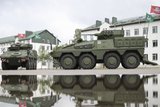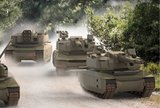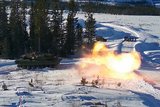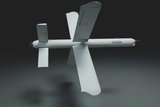The challenge of making the inflatable illusion and training centre
HIMARS is one of the more complex inflatables i2K Defense has made. (Photo: i2K Defense)
Traditionally inflatable systems have been used for decoys of basic military vehicles and aircraft and more recently to create tactical training environments, but makers are also rising up to the challenge of creating more classified platforms with less physical data.
Portable shoot houses enable creation of a realistic tactical training environment using reconfigurable rubber walls, removing the need to rely on and possibly damage existing buildings. However, the same technology is finding fresh application in the often highly classified sphere of creating battlefield decoys of High Mobility Artillery Rocket Systems (HIMARS) and other weapon systems.
Stacy Gray, government sales consultant
Already have an account? Log in
Want to keep reading this article?
More from Land Warfare
-
![Hungary set to begin using Hero 400 loitering munitions]()
Hungary set to begin using Hero 400 loitering munitions
Developed by Israel's Uvision and with systems being sold in the thousands to multiple European NATO countries and the US, the Hero family of loitering systems is also in production in the US and Italy, the latter through Rheinmetall.
-
![Croatia orders Leopards and CAESAR howitzers as Lithuania orders more CAESARs]()
Croatia orders Leopards and CAESAR howitzers as Lithuania orders more CAESARs
The Leopard is becoming the tank of choice in central and eastern Europe as Croatia joins Lithuania, the Czech Republic and Hungary in ordering the platform. Lithuania and Croatia have also signed for CAESAR howitzers.
-
![Light Reconnaissance Strike – enabling a vital mission set (Studio)]()
Light Reconnaissance Strike – enabling a vital mission set (Studio)
A new system-of-systems concept will unlock digital integration of sensors and weapons for Light Forces, allowing them to shape the battlefield environment on their own terms and upgrade legacy platforms.






















